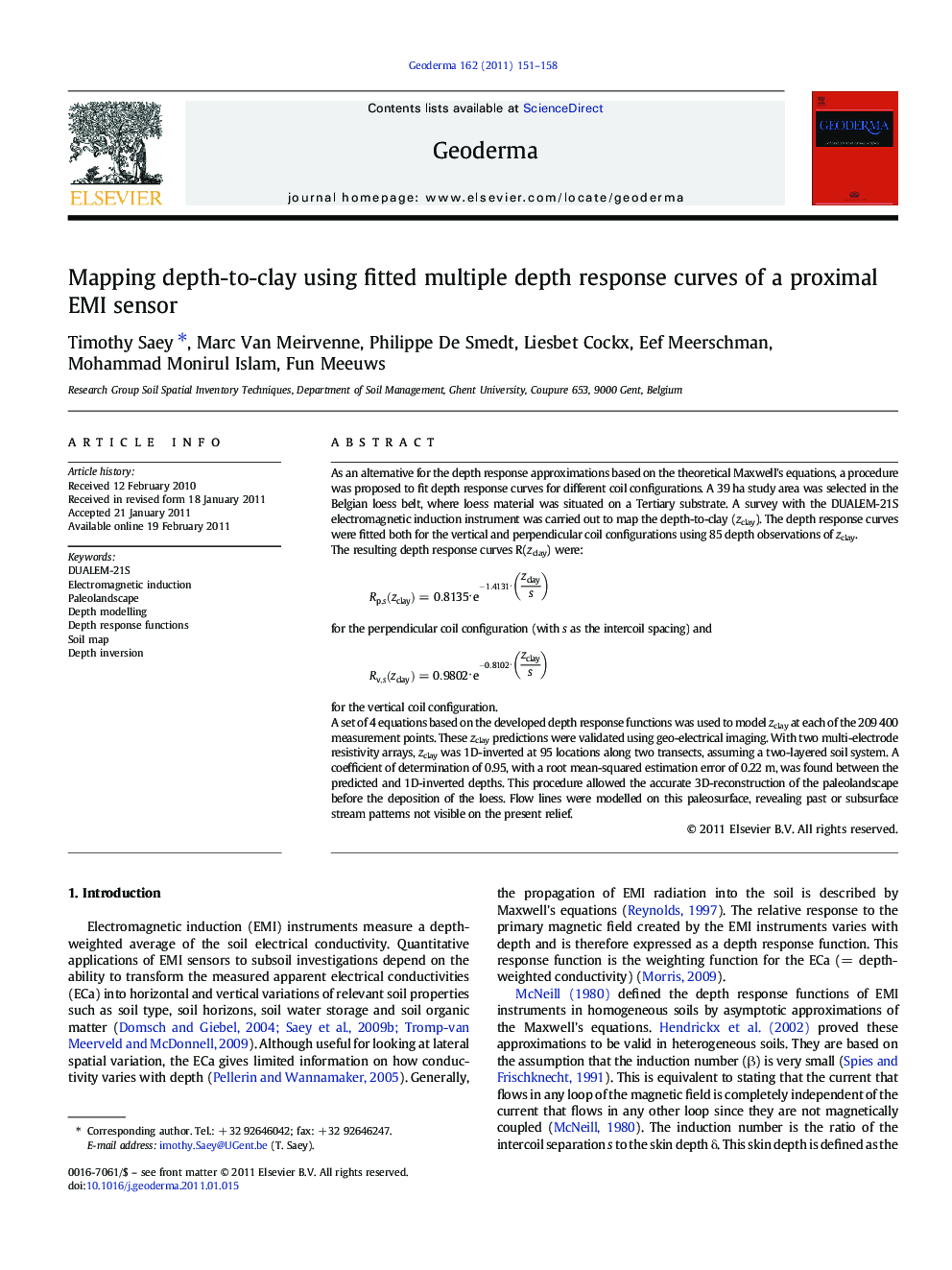| کد مقاله | کد نشریه | سال انتشار | مقاله انگلیسی | نسخه تمام متن |
|---|---|---|---|---|
| 4574120 | 1629511 | 2011 | 8 صفحه PDF | دانلود رایگان |

As an alternative for the depth response approximations based on the theoretical Maxwell's equations, a procedure was proposed to fit depth response curves for different coil configurations. A 39 ha study area was selected in the Belgian loess belt, where loess material was situated on a Tertiary substrate. A survey with the DUALEM-21S electromagnetic induction instrument was carried out to map the depth-to-clay (zclay). The depth response curves were fitted both for the vertical and perpendicular coil configurations using 85 depth observations of zclay.The resulting depth response curves R(zclay) were:Rp,s(zclay)=0.8135⋅e-1.4131⋅zclaysfor the perpendicular coil configuration (with s as the intercoil spacing) andRv,s(zclay)=0.9802⋅e-0.8102⋅zclaysfor the vertical coil configuration.A set of 4 equations based on the developed depth response functions was used to model zclay at each of the 209 400 measurement points. These zclay predictions were validated using geo-electrical imaging. With two multi-electrode resistivity arrays, zclay was 1D-inverted at 95 locations along two transects, assuming a two-layered soil system. A coefficient of determination of 0.95, with a root mean-squared estimation error of 0.22 m, was found between the predicted and 1D-inverted depths. This procedure allowed the accurate 3D-reconstruction of the paleolandscape before the deposition of the loess. Flow lines were modelled on this paleosurface, revealing past or subsurface stream patterns not visible on the present relief.
Research highlights
► A procedure was proposed to fit depth response curves for different coil configurations.
► A survey with the DUALEM-21S electromagnetic induction instrument was carried out to map the depth-to-clay.
► The depth-to-clay predictions were validated using geo-electrical imaging.
► This procedure allowed the accurate 3D-reconstruction of the paleolandscape.
Journal: Geoderma - Volume 162, Issues 1–2, 15 April 2011, Pages 151–158